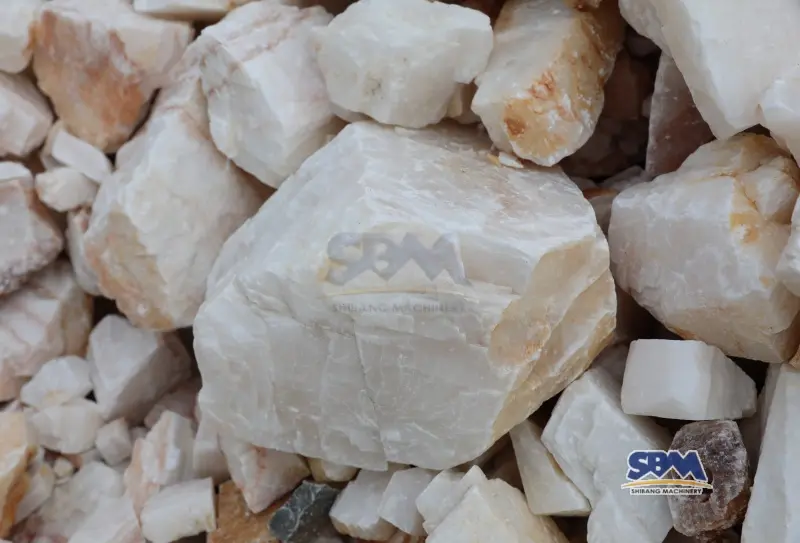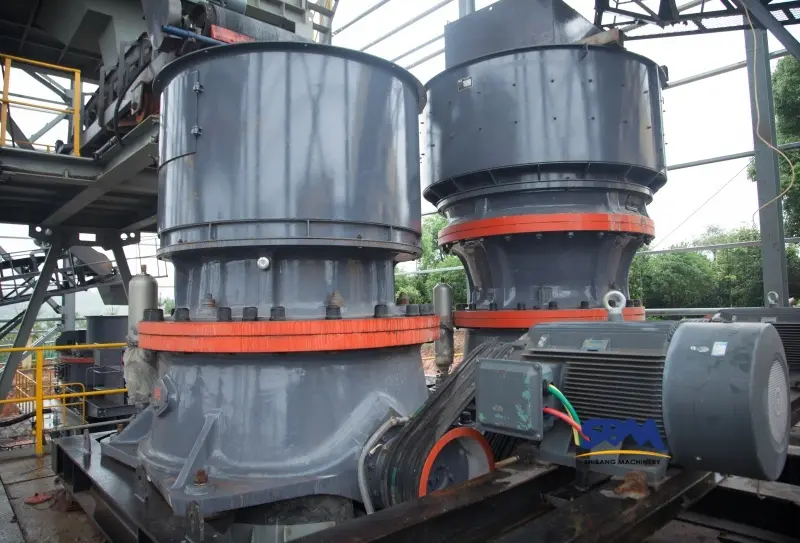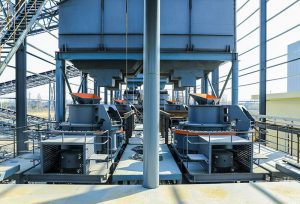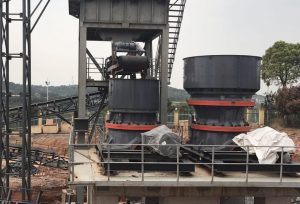Surel: [email protected]
Kalsit
Isi Utama
Ini adalah awal yang bagus, Kanan? Bagi saya, itu dimulai dengan sepotong kuning kusam kalsit ditemukan dalam perjalanan berdebu bertahun-tahun yang lalu. Tidak ada yang mewah, hanya batu yang agak berkilau. Tapi profesor itu meneteskan cuka ke atasnya. Mendesis. Sihir murni. Tiba-tiba, itu bukan hanya batu; itu adalah chemistry di tanganmu. Reaksi mendesis itu—energinya yang murni—memikat saya. Saya masih bersemangat berjalan di tambang atau melihat kalsit di bebatuan pinggir jalan. Ini adalah pengubah utama: batu kapur polos suatu saat, pertarungan Islandia yang mempesona berikutnya. Kalsit (CACO₃) adalah mineral karbonat paling umum di bumi, ditemukan dari meja dapur hingga katedral gua. Namun tampilannya yang sederhana menyembunyikan sebuah cerita besar—tentang laut purba, tekanan besar, dan bagaimana hal itu ditemukan dalam banyak hal sehari-hari. Itu adalah fondasi di bawah kita dan kilauan di gua-gua yang gelap.

Kelahiran dengan Api, Air, dan Waktu: Kisah Asal Epik Calcite
Gambar berdiri di dasar laut dangkal yang hangat 300 juta tahun yang lalu. Sinar matahari bersinar melalui air. Makhluk laut kecil membuat cangkang detail dari mineral air. Mereka hidup, mati, dan tenggelam, lapis demi lapis kecil, menumpuk seperti pasir halus yang menumpuk. Ribuan tahun berlalu. Tekanan meningkat. Lumpur lunak itu mengeras, berkemas, berubah menjadi batu padat. Itu batu gamping – sederhana dan murni. Bayangkan Tebing Putih Dover – monumen besar yang dibuat oleh plankton. Itu Kalsit Cerita #1.
Tapi masih ada lagi. Jauh di bawah tanah, magma panas menghangatkan air tanah. Air yang kaya mineral ini mengalir melalui celah-celah batu. Saat mendingin, kristal tumbuh. Terkadang jarum kristal tipis, terkadang yang terkenal tajam, kristal runcing di celah batu. Pembuluh darah air panas – Kalsit Cerita #2.
Sekarang ambillah batu kapur itu. Menguburnya sangat dalam. Meningkatkan panas dari inti bumi, tambahkan tekanan penghancur. Atom bergerak, membentuk kristal baru. Batu kapur polos berubah, menjadi lebih kuat, lebih padat, seringkali dengan pola warna yang menakjubkan. Itu dia: marmer. David karya Michelangelo berasal dari sini, bukan tanah liat – Kalsit Cerita #3. Bahkan danau kering pun membantu. Air mengering, meninggalkan lapisan kalsit yang membentuk undakan travertine bergelombang seperti Pamukkale atau batuan tufa yang menggumpal. Setiap permulaan – di laut, air panas, tekanan yang dalam, atau danau kering – mengubah kalsit selamanya: ukuran butirnya, kemurnian, kualitas kristal, dan akhirnya, tujuannya.
Kotak Peralatan Kalsit: Mengapa Mineral Ini Menyelesaikan Pekerjaannya
Oke, mari kita menjadi nyata. Mengapa kalsit ada dalam cat, pil, dan batu paving? Ia berhasil karena perpaduan yang hebat antara sifat kimia dan fisik, tepat. Secara kimia, itu sederhana: kalsium, karbon, oksigen (CACO₃). Hal ini membuatnya bereaksi. Jatuhkan asam lemah (cuka!) di atasnya – ledakan – itu mendesis. Gas CO₂ itu tidak hanya menyenangkan; itu memperbaiki tanah asam atau membersihkan polusi dari cerobong asap. Panaskan dengan kuat, dan berubah menjadi kapur tohor (Cao), inti semen dan baja.
Secara fisik, mudah untuk dikerjakan. Kelembutannya (Mohs 3) berarti Anda dapat menghancurkannya tanpa alat yang super keras. Yang terbaik dari semuanya, dia pecah dengan rapi menjadi bentuk seperti berlian ketika dipukul dengan benar. Pemisahan yang dapat diprediksi ini sempurna untuk membuat ukuran terkontrol. Tapi yang benar-benar cantik? Kalsit optik. Temukan contoh yang jelas dari Islandia Spar, tahan di atas teks – bersiaplah untuk penglihatan ganda! Pemisahan cahaya ini bukan sekadar tipuan. Ini mungkin membantu orang Viking mengemudi saat cuaca mendung dan mengajari kita tentang cahaya terpolarisasi – yang penting untuk laser, layar TV, dan mempelajari batu. Bentuknya yang kristal – seperti gigi hiu, jarum halus, atau kolom – menambah keindahan dan sains. Ini adalah bahan penyusun alam yang sempurna.
Kartu Identitas Kalsit: Lembar Cheat Ahli Geologi Lapangan
| Ciri | Apa yang Anda Lihat/Uji | Mengapa Ahli Geologi & Perawatan Insinyur |
|---|---|---|
| Rumus Kimia | CACO₃ | Memprediksi reaktivitas: larut dalam asam, terurai menjadi kapur. Dasar bagi proses kimia yang tak terhitung jumlahnya. |
| Kekerasan | Mohs 3 (Mudah tergores oleh satu sen tembaga) | Lembut = Lebih Mudah & lebih murah untuk dihancurkan/digiling. Lebih lembut dari kebanyakan mineral pembentuk batuan. |
| Pembelahan | Belah Ketupat Sempurna (Pecah menjadi bentuk seperti berlian dengan permukaan jajaran genjang) | Kerusakan yang konsisten menyederhanakan pemrosesan. Fitur diagnostik utama. |
| Kilau | Seperti kaca (seperti kaca) ke Pearly ke Kusam (bentuk masif) | Berdampak pada nilai estetika (kristal, marmer) dan bagaimana interaksinya dengan cahaya pada bahan pengisi/cat. |
| Garis | Selalu Putih (Bubuk dikikis pada porselen) | Sederhana, pengenal yang dapat diandalkan. Tidak berubah dengan variasi warna mineral. |
| Tes Asam | Desis yang Kuat dengan dingin, encerkan HCl (Cuka bekerja lambat) | Uji lapangan definitif! Mengonfirmasi karbonat. Penting untuk lingkungan & aplikasi ag. |
| Bagian Pesta | Birefringensi (Refraksi Ganda) dalam kristal bening (Spar Islandia) | Unik! Penting untuk optik, navigasi sejarah, tanda pengenal mineral. Membedakannya dari yang mirip. |
Kalsit: Bahan Tak Terlihat dalam Pekerjaan Sehari-hari Anda
Lihatlah sekeliling sekarang. Kalsit mungkin di dalam ruangan ini. Kertas halus itu? Terima kasih Kalsium karbonat ground (GCC). Bubuk kalsit super halus mengisi dan melapisi kertas, membuatnya lebih terang, lebih halus, kurang tembus pandang, and better for . Cat tembok? GCC menambah jumlah besar dengan harga murah, menjadikannya lebih putih dan kuat. Wadah plastik itu? Pengisi kalsit membuatnya lebih kaku, membantunya menjaga bentuk, dan menghaluskan permukaannya. Berjalanlah ke luar. Jalan konkrit? Kemungkinan besar telah menghancurkan batu kapur. Bagian depan batu di gedung bank itu? Mengubah kalsit (marmer), menunjukkan kekuatan. Ambil pasta gigi Anda. Ya, kalsit bubuk dengan lembut menggosok gigi Anda. Periksa vitamin atau sereal – kalsit mungkin menambah kalsium.
Kalsit memurnikan baja cair. Ini memperbaiki air tambang yang bersifat asam. Ini menghentikan garam dan bubuk deterjen agar tidak menggumpal. Bahkan ada dalam pakan ternak untuk mendapatkan tulang dan cangkang telur yang kuat. Dari gedung besar hingga tempat obat-obatan kecil, kalsit ada dimana-mana. Ini adalah penolong terbaik yang serba bisa, bersembunyi di depan mata.
Kebenaran Brutal: Mengapa Anda Harus Menghancurkan Kalsit dengan Benar
Jujur saja: urat kalsit mengkilap atau balok batu kapur besar di tambang? Ini hampir tidak berguna apa adanya. Nilainya tetap terkunci di dalam. Penghancuran kalsit bukanlah suatu pilihan—ini adalah langkah penting yang mengungkap nilai mineral tersebut. Ini bukan kerusakan acak. Ini adalah pekerjaan rekayasa yang cermat. Anda membutuhkan ukuran yang tepat: tajam 1-3 potongan inci untuk beton; batu berbentuk kotak yang lebih kecil (3/8-3/4 inci) untuk jalan raya; pasir halus halus untuk kaca; atau bedak yang lebih tipis dari bedak wajah (diukur dalam mikron) untuk kertas atau plastik. Mengacaukan ini, dan semuanya gagal.
Yang pertama datang penghancuran primer. Gambarnya sangat besar penghancur rahang—Mesin raksasa yang menggunakan kekuatan besar untuk mengunyah batu-batu besar 6-8 batu inci. Itu keras, berdebu, dan sangat kuat. Berikutnya adalah penghancuran sekunder. Di Sini, penghancur kerucut bekerja paling baik. Bayangkan sebuah kerucut yang berputar di dalam mangkuk, menekan batu terhadap dirinya sendiri. Mereka membuat batu-batu berbentuk yang dibutuhkan untuk beton dan jalan yang kuat. Penghancur dampak (palu menghantam batu ke dinding) bekerja dengan baik untuk batuan yang lebih lunak dan menghasilkan lebih banyak debu.
Namun untuk bubuk super halus—GCC pada cat atau plastik—Anda memerlukannya pabrik penggilingan. Pabrik bola adalah pekerja keras: drum berputar dengan bola baja yang menghancurkan material. Pabrik Rol Vertikal (VRM) sudah maju: batu terjepit di antara roller dan meja pemintal, menggunakan lebih sedikit energi untuk penggilingan halus. Penghancuran yang baik bukan hanya soal kekuatan—ini soal perpaduan ukuran dan bentuk. Salah paham, dan lapisan kertas menjadi bergelombang, retakan beton, atau plastik pecah. Ini adalah langkah dasar namun penting dalam keseluruhan proses kalsit.
Memilih crusher Anda: Ini Seperti Berkencan – Kompatibilitas Itu Penting!
Memilih acrusher kalsit tidak membuka-buka katalog. Ini adalah keputusan rekayasa yang berisiko tinggi. Kencangkan ini, dan Anda mengeluarkan uang melalui waktu henti, biaya keausan yang tinggi, dan kualitas produk yang buruk. Inilah daftar realitas yang sulit:
- Umpan: Apa yang berjalan di pintu? Besar sekali, batu yang meledak (24+ inci)? Atau penambangan yang telah disaring sebelumnya (0-12 inci)? Crusher utama Anda harus menelan gumpalan terbesar tanpa tersedak. Jaw crusher adalah raja di sini.
- Sasarannya: Apa yang keluar? Agregat konstruksi? Pasir kaca? Pengisi cat? Masing-masing menuntut ukuran dan bentuk partikel yang berbeda. Butuh chip kubik? Wilayah penghancur kerucut. Perlu denda? Mungkin penghancur dampak sejak dini, pasti penggilingan pabrik nanti. Bubuk mikron? VRM atau ball mill dengan pengklasifikasi.
- Volumenya: Betapa laparnya binatang itu? Ton Per Jam (TPH) itu sakral. Meremehkan, dan pabrik menjadi hambatan. Menaksir terlalu tinggi, dan kamu punya harga yang mahal, kekuatan monster yang kurang dimanfaatkan. Bersikaplah sangat realistis.
- Kepribadian Batu: Jangan tertipu oleh “Mohs 3”. Kalsit bisa menjadi diva. Apakah itu kasar? Apakah mengandung urat rijang atau kuarsa (silika = penghancur memakai mimpi buruk)? Apakah itu basah Dan lengket, menempelkan dirinya ke saluran dan layar? Kelembapan adalah musuh penghancuran yang efisien. Apakah patah dengan sempurna atau menggumpal? Ketahui keunikan deposit Anda.
- Dunia Nyata: Biaya energi sangat besar. Penghancur ramping itu sebaiknya efisien. Pemeliharaan tidaklah glamor, tapi itulah hidup. Bisakah kru Anda Sebenarnya sampai ke bagian aus (liner, bantalan) tanpa membongkar separuh mesin? Downtime adalah hilangnya keuntungan. Pikirkan ketersediaan suku cadang secara lokal. Daya tahan penting – pemrosesan kalsit adalah a 24/7 menggiling.
Tidak ada solusi terbaik. Ini tentang mencocokkan kekuatan mesinmilikmu batu danmilikmu pasar. Pragmatisme tekniknya bertemu dengan geologi.
SBM China: Dimana Batu Bertemu Besi yang Andal
Berbicara serius pemrosesan kalsit di dunia nyata, nama seperti SBM China muncul terus-menerus di sekitar kantor tambang dan meja manajer pabrik. Mengapa? Karena mereka membangun kit itu berlangsung Dan melakukan di tempat yang penting – di tempat yang berdebu, menuntut, 24/7 pabrik pengolahan mineral. Mereka memahami kalsit bukanlah granit; dibutuhkan solusi yang kuat namun efisien. Portofolio mereka terlihat seperti perangkat penting prosesor kalsit:
- Penghancuran primer: Milik mereka C6X/Penghancur Rahang adalah binatang buas. Rangka tugas berat, kinematika yang dioptimalkan, penyesuaian mudah. Dibangun untuk mengambil yang pertama, serangan brutal dari batu kapur yang meledak dan terus berjalan. Keandalan yang dapat Anda andalkan.
- Penghancuran sekunder: Untuk memproduksi ukuran dan bentuk agregat penting tersebut, milik mereka HST/Penghancur Kerucut HPT adalah tingkat atas. Sistem hidrolik canggih untuk perubahan pengaturan cepat, Desain rongga yang bagus, konstruksi yang kokoh. Mereka memberikan kualitas produk yang konsisten saat dimuat.
- Seni Rupa: Pabrik Penggilingan. Di sinilah nilai kalsit seringkali meroket. SBM LM Pabrik Rol Vertikal adalah pengubah permainan untuk produksi GCC. Efisien? Sangat. Mesin ini menggiling lebih halus dibandingkan ball mill dengan energi yang lebih sedikit. Tepat? Kontrol dan pengklasifikasi tingkat lanjut menghasilkan distribusi ukuran partikel yang ketat. Mereka menangani kelembapan lebih baik daripada banyak alternatif lainnya. Untuk aplikasi ultra-halus atau spesifik, milik mereka Pabrik Bola menawarkan teknologi yang sudah terbukti.
Yang menarik bukan hanya spesifikasinya, tapi nuansa perlengkapannya dirancang oleh orang-orang yang pernahpernah di pabrik pengolahan. Titik pemeliharaan yang dapat diakses, suku cadang aus yang dirancang untuk umur panjang (bahkan terhadap kalsit yang sedikit abrasif), otomatisasi yang menyederhanakan pengoperasian, dan jaringan dukungan global. Mesin ini dibuat untuk jangka panjang, mengetahui bahwa uptime sama dengan keuntungan dalam permainan kalsit.
Di luar crusher: Metamorfosis Kalsit Menjadi Emas
Menghancurkan sangat penting, tapi itu hanya Babak Pertama. Mengubah mentah, menghancurkan kalsit menjadi premium, produk yang siap dipasarkan adalah simfoni proses. Inilah tur di belakang panggung:
Penyaringan
Layar getar adalah pahlawan tanpa tanda jasa. Bayangkan saringan multi-dek bergetar hebat. Mereka dengan cermat memilah bahan yang dihancurkan menjadi pecahan dengan ukuran yang tepat: batuan berukuran besar disirkulasikan kembali, agregat bersih untuk beton, nilai pasir tertentu untuk kaca atau pasir pengecoran, denda menuju penggilingan. Presisi di sini menentukan nilai produk.
Pencucian & Penggosokan Atrisi
Ada tanah liat yang lengket atau kontaminan permukaan yang menempel pada Anda kalsit? Mencuci tanaman meledakkannya dengan air, terkadang menambahkan tindakan menggosok untuk menghilangkan kotoran yang membandel. Penting untuk mencapai kecerahan dan kemurnian tinggi yang diminta oleh kertas, cat, dan pengisi plastik. Menghasilkan air berlumpur, meskipun demikian – pengental dan alat penyaring menjadi penting untuk pemulihan air dan pengelolaan tailing.
Penggilingan halus
Di sinilah GCC mendapatkan keunggulannya. Pabrik Bola menggiling menggunakan bola baja bertingkat. Pabrik Rol Vertikal (VRM) terjepit di antara rol dan meja. Tujuannya: mengurangi partikel hingga mikron (thouhs of a millimeter). Ini boros energi, menuntut desain yang efisien.
Klasifikasi
Penggilingan menghasilkan berbagai ukuran. Pengklasifikasi Udara menggunakan gaya sentrifugal dan aliran udara untuk memisahkan partikel. Seperti terowongan angin berkecepatan tinggi, mereka mengeluarkan partikel kasar kembali untuk digiling ulang dan hanya membiarkan partikel terbaik saja, pass bubuk berukuran target. Ini mengontrol ujung atas distribusi ukuran partikel (PSD) – penting untuk kinerja dalam pelapisan atau polimer.
Modifikasi Permukaan
Kadang-kadang, langkah khusus terakhir. Potongan kalsit kecil secara alami menarik air. Untuk plastik atau karet, kamu membutuhkannya menolak air. Memasuki pabrik pelapisan. Di Sini, bubuk kalsit panas bertemu asam stearat (bahan pelapis) atau bahan kimia khusus lainnya. Lapisannya menempel kuat, menciptakan lapisan kedap air. Ini membantu bubuk tercampur rata ke dalam plastik dan membuat produk akhir lebih kuat. Ini mengubah bahan pengisi dasar menjadi bahan yang lebih baik.
Ini rumit, tari padat modal. Setiap langkah menambah biaya tetapi juga nilai yang signifikan, mengubah batuan bernilai rendah menjadi batuan terspesialisasi, mineral industri dengan margin tinggi.
Pertunjukan Cahaya Alam & Katedral Bawah Tanah: Tindakan Ajaib Kalsit
Mundur dari industri. Kalsit benar-benar membuat takjub. Kalsit optik, Islandia Spar yang sangat terkenal, adalah trik terbaik dari alam. Pegang kristal sempurna di atas teks. Poof! – Anda melihat ganda! Ini memecah cahaya. Orang-orang masih berdebat (ahli geologi menyukai ini daripada minuman) jika Viking menggunakan irisan tipis sebagai “batu matahari.” Pada hari berawan, melihat melaluinya mungkin menunjukkan di mana matahari berada, membantu navigasi. Kisah nyata? Mungkin. Tapi ini menarik.
Sains nyata: Pemisahan cahaya ini membantu ilmuwan besar seperti Huygens pada tahun 1600an menemukan pembengkokan cahaya – dasar bagi lensa modern, laser, dan layar TV. Lalu ada gua. Masuk ke gua kalsit sungguh menakjubkan. Stalaktit menggantung seperti es batu, dibuat setetes demi setetes selama berabad-abad karena air kehilangan gas. Stalagmit bangkit seperti penjaga yang diam dari lantai untuk menemui mereka. Batu aliran menutupi dinding seperti air terjun beku. Helikt memutar ke samping seolah-olah mereka mengabaikan gravitasi. Sedotan soda – tabung tipis berongga – menunjukkan bagaimana bentuk yang lebih besar dimulai. Ukurannya yang sangat besar dan keindahannya, diukir oleh air melalui batu kapur selama bertahun-tahun yang tak terhitung jumlahnya, menunjukkan bagaimana waktu mengubah banyak hal. Itu keindahan yang dibuat dengan lambat, ilmu sederhana.
Kalsit & Kemanusiaan: Kemitraan 10.000 Tahun
Orang telah menggunakan kalsit sejak peradaban dimulai. Jauh sebelum penghancur modern, orang-orang awal melihat nilainya. Orang Mesir kuno adalah ahlinya. Mereka menambang kalsit tembus pandang (sering disebut pualam Mesir) dekat Luxor. Pengrajin mengukir cangkir yang indah, lampu, stoples, dan bahkan peti mati batu darinya. Wadah tipis bersinar ketika cahaya melewatinya – seni yang berguna. Orang Yunani dan Romawi dirawat marmer (mengubah kalsit) sebagai sesuatu yang sakral. Tiang-tiang Parthenon yang mengilap, Patung David karya Michelangelo (dari marmer Carrara), dan pola detail Taj Mahal – kalsit adalah dasar seni terbesar umat manusia. Tapi itu juga sangat praktis.
Bakar batu kapur untuk mendapatkan kapur tohor (Cao). Tambahkan air untuk membuat pasta jeruk nipis. Mortar lengket ini menyatukan batu-batu di Colosseum Romawi, kastil abad pertengahan seperti Carcassonne, dan katedral seperti Notre Dame. Tanpa kapur ini buatan kalsit, bangunan batu besar tidak akan ada. Buku pertambangan kuno Agricola yang penting menjelaskan penggunaan kapur (dari batu kapur) untuk membantu melelehkan logam. Para petani ribuan tahun lalu menemukan penyebarannya batu kapur hancur perbaikan tanah asam untuk hasil panen yang lebih baik – masih dilakukan sampai sekarang. Kalsit bukan hanya batu; itu adalah bagian penting dari sejarah manusia dalam seni, bangunan, pertanian, dan industri.
Cakrawala: Babak Berikutnya Kalsit – Nano, Hijau & Lebih pintar
Kisah Calcite belum selesai. Lab di mana pun sibuk menguji batasan baru. Nano-Kalsit adalah daerah baru. Membuat partikel kalsit menjadi sangat kecil (sepermiliar meter) memberi mereka kemampuan baru. Bayangkan kapsul obat yang dilapisi nano-kalsit yang melepaskan obat hanya di area tubuh tertentu. Gambar sangat ringan, bahan super kuat untuk mobil atau pesawat masa depan. Bayangkan bangunan yang bisa membersihkan sendiri atau tangguh, cat anti gores menggunakan potongan kalsit kecil. Pemanfaatannya terhadap lingkungan berkembang pesat.
Kalsit bekerja dengan baik Penangkapan Karbon (CCU). Bayangkan tangki besar tempat asap pabrik menggelembung melalui campuran kalsit, menjebak CO₂ sebagai kapur yang aman. Para ilmuwan sedang mempelajari kalsit khusus untuk menangkap CO₂ langsung dari udara. Ini sudah menjadi kunci dalam membersihkan air kotor, menghilangkan zat-zat berbahaya seperti fosfat dan logam. Keberlanjutan sekarang menjadi pusat industri. Penggunaan energi yang besar dari penghancuran dan penggilingan sedang diatasi. Ide-ide baru mencakup penggiling super efisien, sistem penghancuran yang lebih baik, penyortiran yang lebih cerdas, dan metode kering untuk mengurangi penggunaan air. Memperbaiki tambang tua bukanlah hal tambahan – itu sudah direncanakan sejak awal, mengubah lahan bekas menjadi lahan basah, taman, atau rumah hewan. Penambangan yang bertanggung jawab memastikan penambangan dilakukan dengan benar dan bertahan lama. Masa depan menghadirkan pemrosesan yang lebih cerdas (menggunakan AI untuk menjalankan penghancur?), kegunaan baru (kalsit dalam baterai? bagian-bagian komputer?), dan kepedulian lingkungan yang kuat. Kami masih menemukan kemungkinan tersembunyi kalsit.
Penghargaan Terakhir bagi Pembangkit Tenaga Listrik yang Tenang di Bumi
Dari pembentukan dasar laut yang lama secara diam-diam hingga penghancuran yang kuat dalam mesin penghancur rahang, dan dari keindahan halus struktur gua hingga booster tersembunyi di bagian plastik mobil Anda, Kisah kalsit menunjukkan perubahan yang luar biasa. Formulanya yang tampak sederhana menyembunyikan kegunaan yang sangat besar. Ciri-ciri khususnya – terobosan bersih, desisan yang menggelegak, visi ganda yang menakjubkan – membuatnya tetap menarik dan sangat membantu.
Mempelajari keterampilan dan ilmu penghancuran kalsit dan kemudian diubah melalui penggilingan, penyortiran, dan perawatan itulah yang mengubah batu biasa menjadi sesuatu yang berharga. Perusahaan menjadi kuat, mesin yang efektif adalah mitra utama di sini. Melihat ke depan, didorong oleh ide-ide baru dan kepedulian yang lebih kuat terhadap sumber daya, kalsit pasti akan terus mengubah dunia kita dengan cara yang mengejutkan. Lain kali Anda melihat tebing kapur, patung marmer, atau bahkan kertas majalah yang mengkilat, ingat mineral khusus ini. Ini adalah salah satu hal paling mendasar di Bumi, berguna, dan hadiah yang diam-diam indah. Ini menghasilkan rasa hormat kami, kepintaran kita, dan perlindungan kita.



